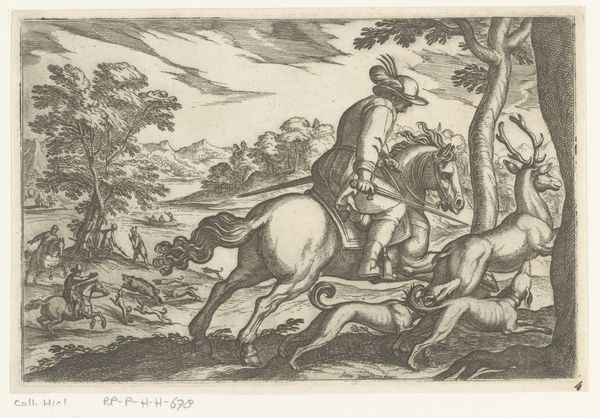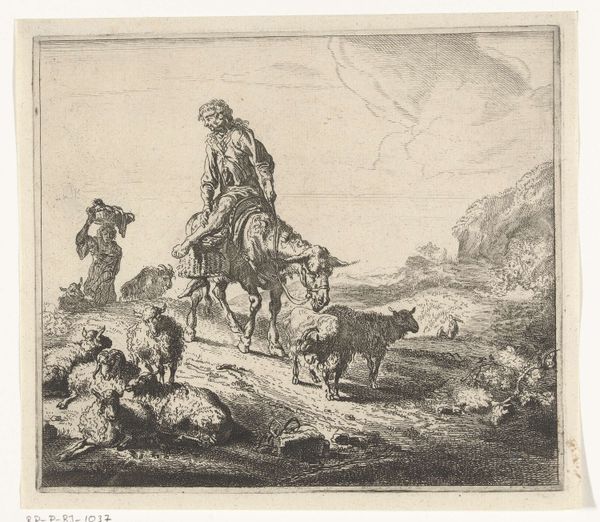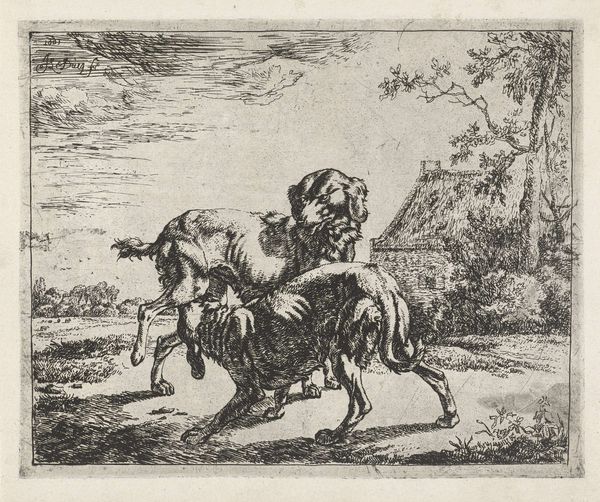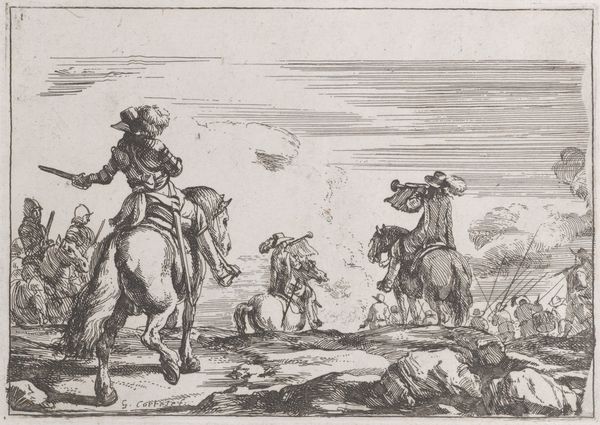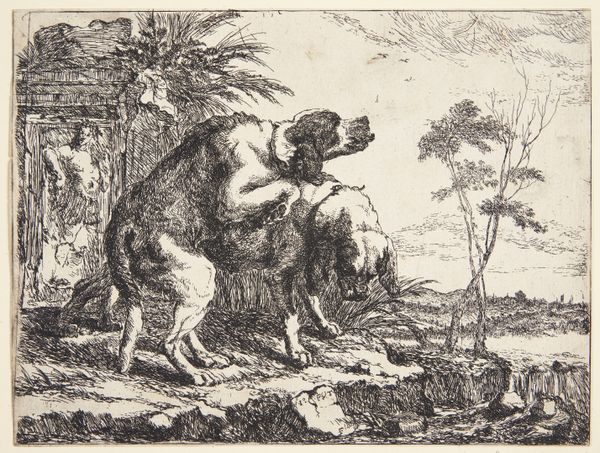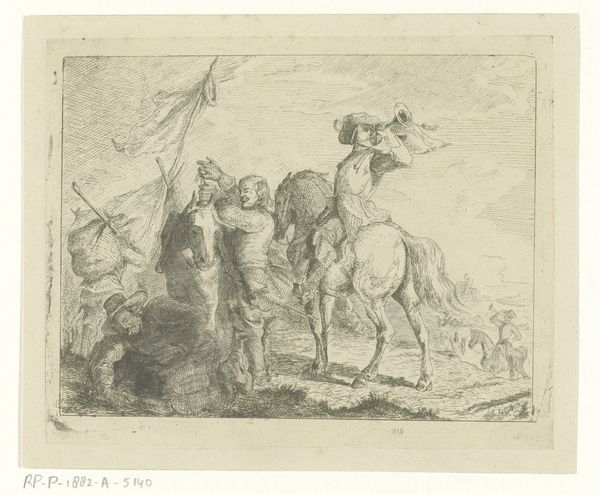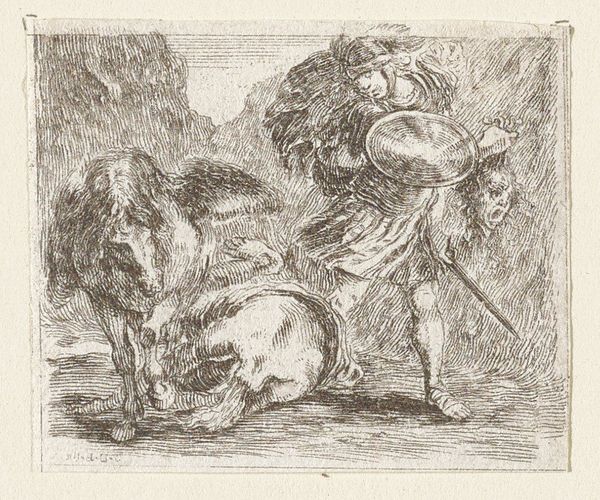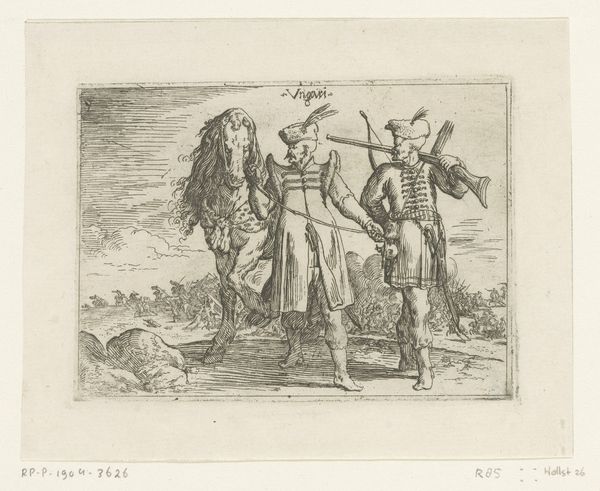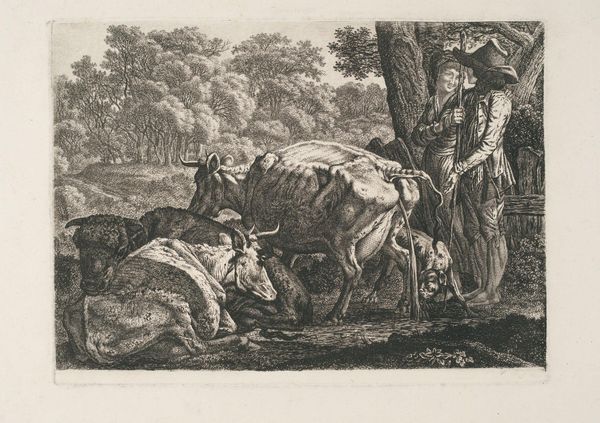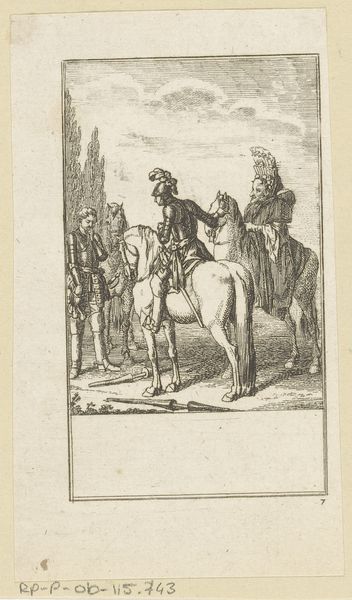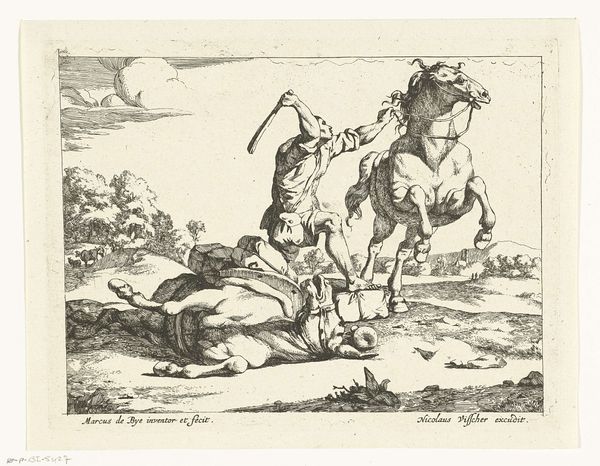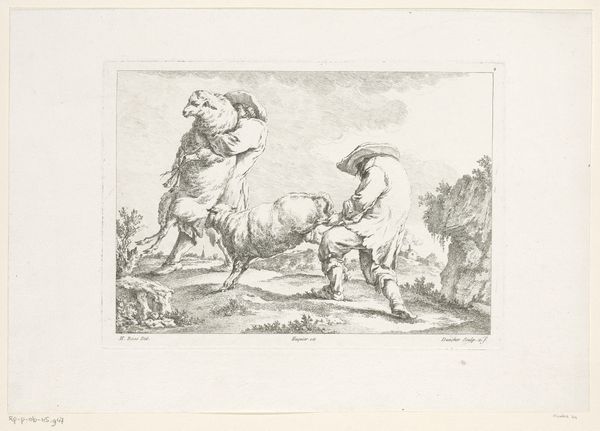
print, engraving
#
dutch-golden-age
# print
#
dog
#
old engraving style
#
landscape
#
figuration
#
line
#
genre-painting
#
engraving
Dimensions: height 98 mm, width 155 mm
Copyright: Rijks Museum: Open Domain
Curator: Before us, we have “Windhonden” - translated as “Greyhounds”- a print by Frederick Bloemaert, created sometime between 1635 and 1670. It’s currently held in the collection of the Rijksmuseum. Editor: It’s remarkably detailed for an engraving, a real feat of the linear art. My initial reaction is one of rural stillness, but with an underlying sense of watchfulness; the slim dogs are posed, not relaxed. Curator: Bloemaert truly mastered the line. There's an echo of pastoral themes, common in Dutch Golden Age art, yet with a distinctly hunting narrative present, reflecting the societal value placed on hounds for sport and status. Even the choice to include a scene of genre painting enriches the message of elitist entertainment. Editor: I agree. And the landscape contributes. It’s not just backdrop; the trees have a nervous energy which mirrors the dogs' alertness. How do you see the symbology of the hat or plumage resting on the shoulders? Does it connote a sense of aristocratic flair in the presentation of rural leisure? Curator: Precisely! The hat acts as a signifier of status and prosperity. Dress wasn’t just practical; it served as an identifier. Consider, too, the visual language—the greyhounds themselves. Known for speed and loyalty, but they are also visual representations of aristocracy's power over nature and perhaps others too. It is something of an aesthetic and economic symbolism, is it not? Editor: It does also capture the emerging societal distinctions of the time. The imagery certainly reinforces the association between nobility, land ownership, and hunting culture. There is so much narrative conveyed about these aristocratic people that were able to participate in a form of elite pleasure. Curator: A very thought-provoking point! “Windhonden" as both an image of, and an insight into, a very particular moment in social history as well as cultural values surrounding nobility and hunting in the Dutch Golden Age. Editor: Indeed. Bloemaert offers us a window into not only the landscape but the social landscape of the time. The interplay between stillness and potential energy captures a moment pregnant with implications.
Comments
No comments
Be the first to comment and join the conversation on the ultimate creative platform.

